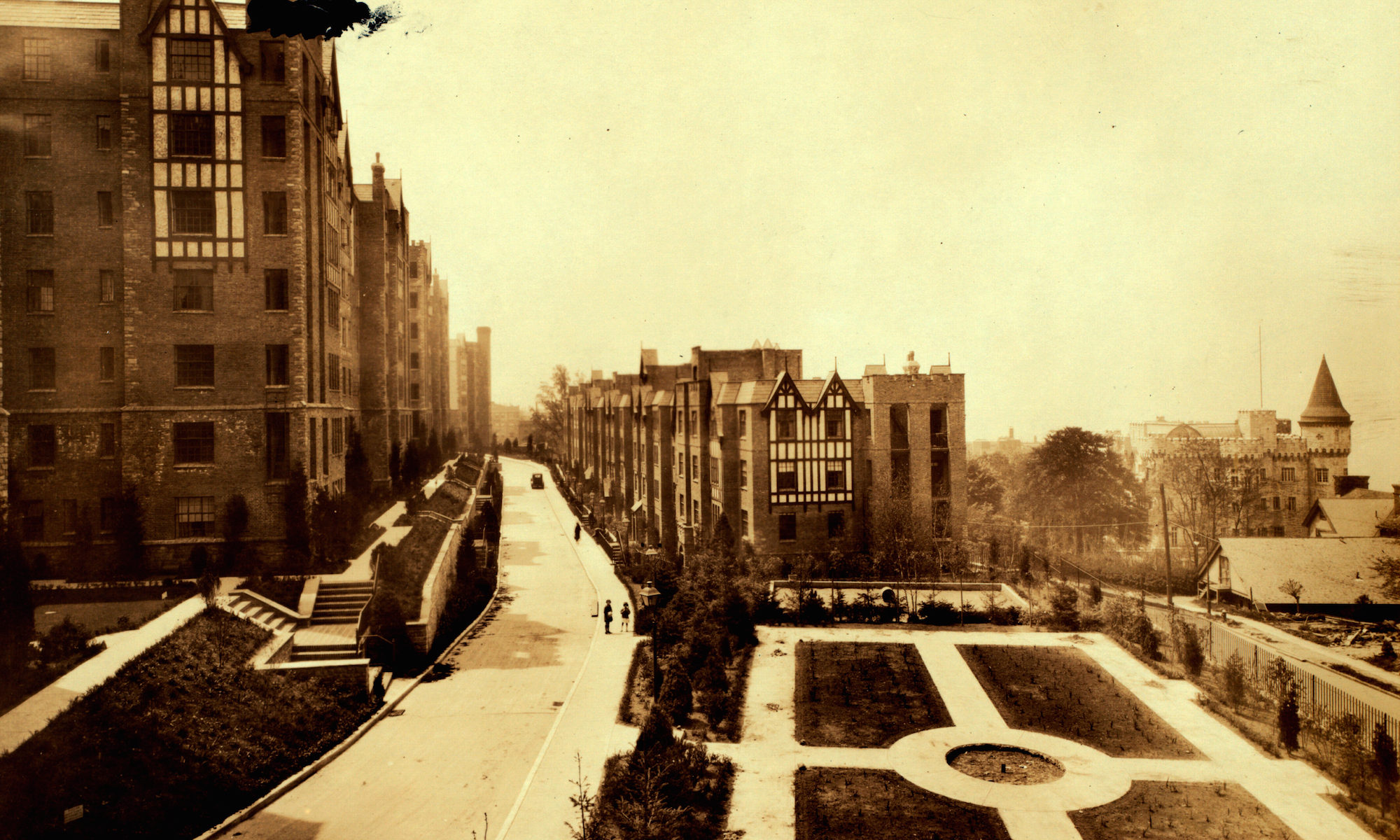16 Chittenden Avenue
“There’s also some colorful history to the place, which had been one of the homes on the grounds of the former Paterno Castle, a lavish cliffside estate built by one of the four Paterno brothers.
The Paternos rose from poverty to become some of the richest developers of the 1920s and 1930s by building some of the first expensive co-ops on Park Avenue and Fifth Avenue.
The “Pumpkin House” was erected by one of the younger brothers, Dr. Charles V. Paterno, as a “husband-catching trap” for each of his four daughters, according to the agent for the property, Victor Principe of Douglas Elliman.” PUMPKIN HO ON BLOCK FOR $1.6M
– Note: Dr. Charles Paterno had just one son, Carlo Paterno, my grandfather.
“The so-called Pumpkin House is completely unrelated to Castle Village. It was built in 1923 for Cleveland Walcutt House, and designed by Franklin D Pagan & Harold D Verna. What does survive from Paterno’s Castle are the medieval-inspired stone gate posts and iron fence located just north of 185th Street.” source
The former guest house of the estate is a remnant leftover after the estate’s redevelopment. Located at 16 Chittenden Avenue at the corner of West 186th Street, the house was built around 1925, and sits on a 250-foot (76 m) pier suspended over a sheer drop to the Henry Hudson Parkway and the Hudson River Greenway. It was originally commissioned by Cleveland Walcutt, an engineer, who built it on land he purchased from the estate of the editor of the New York Herald, James Gordon Bennett Jr. The house is sometimes referred to locally as “The Pumpkin House”, because of its orange color when lit up at night. The three-story, 3,144-square-foot (292.1 m2), house is configured as a two-family home with separate rental one-bedroom apartment. The main unit includes a parlor floor, a dining room. a library, and a “French country” kitchen. The living room and balcony afford views of the downtown Manhattan skyline, as well as the George Washington Bridge and the Hudson River. On clear days, the new Governor Mario M. Cuomo Bridge (Tappen Zee Bridge) connecting Westchester and Rockland counties can be seen to the north. Upstairs are two master bedrooms, two additional bedrooms which can also be used as studies, and two full bathrooms. The house was bought in 2000 for $1.1 million. By 2010 the house had only had four owners, and sold c.2011 for around $3.9 million. In 2016, it was put on the market at the asking price of $5.25 million, and after almost three years, it was sold in January 2019 for $2 million. Several other remnants of the estate are still extant, but are part of the Castle Village complex. (Wikipedia)
External Links:
• Daytonian in Manhattan
• Gothamist NYC’s Incredible Cliffside ‘Pumpkin House’ Is For Sale 2016
• Photos of The Pumpkin House on Wikipedia
• Barry Popik Pumpkin House (Hudson Heights, Manhattan)
• NY Times 210 Feet Above the Hudson, a Jack-o’-Lantern Glows All Year
• Vernon Howe Bailey Frick Collection Intimate Sketches of New York No. 110
The Pumpkin House
Q: I am the exclusive broker for the house where I grew up, popularly known as the Pumpkin House, at 16 Chittenden Place in Upper Manhattan. There are a number of stories about the house — one is that the developer Charles Paterno, whose estate was nearby, built it as a husband-catching trap for one of his daughters. Can you provide any enlightenment? . . . Victor Principe, Douglas Elliman, Manhattan.
A: Stories abound about this house, identified in other records as 16 Chittenden Avenue, but it appears that the Paterno family had no connection to the property, which overlooks the Hudson River on a line with West 186th Street. The land was in the estate of James Gordon Bennett Jr., the publisher of The New York Herald, which sold it to a Cleveland Walcutt in 1923. Walcutt, then living on West 180th Street, filed plans for a $25,000 house designed by Franklin D. Pagan and Harold D. Verna. The cantilevered, steel-framed base jutted far out over the steep slope down to what was then part of Riverside Drive, now the northbound portion of the Henry Hudson Parkway.
Original architectural drawings show a peculiar arrangement of rooms. The second floor had six bedrooms, of which the largest was 11 feet, 6 inches by 10 feet, 10 inches; the others were about 8 by 10 feet. Plans show that four of these smaller bedrooms had no doors, and that the two bathrooms on that floor had showers only, no tubs. Records at the Department of Buildings indicate that the building was completed by late 1925. Census records indicate that Walcutt was a widower with four sons.
Directory listings indicate that Walcutt worked for a family printing firm, but one son, Cleveland Walcutt Jr., said in an interview that his father was ”really sort of a dreamer,” an engineer with experience with the Victor Talking Machine company who was also important in recording native songs and music in the Third World in the early 20th century.
Mr. Walcutt, who is in his 90’s and lives in Michigan, said that he personally ”stood over the shoulder” of the architect and designed much of the house. He recalls his father as eccentric and unpredictable. ”He shouldn’t have built that house,” Mr. Walcutt said. ”I had no love for the place.” The Walcutts lost the house in foreclosure in 1927, and it was purchased by Charles Schwartz, listed in directories as a machinery dealer. It was the Schwartz family who sold the house to your family in 1946.










